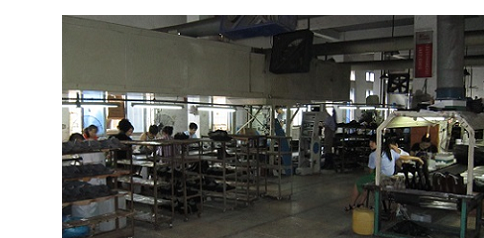The Chinese footwear industry has been one of the greatest success stories among export-oriented industries across the globe. Between 2000 and 2006, footwear exports quadrupled and, today, they account for 70% of footwear imports in major markets. At the same time, the importance of private enterprises in the Chinese footwear industry has grown dramatically at the expense of state-owned firms. Private firms seem to have a “demand” advantage: at any given price, they export to more destinations and sell higher volumes in each destination market. The development of export-driven private enterprise in the Chinese footwear industry has clearly been very successful, but the reasons for success are not well understood. It may reflect product quality and reliability, the extent of the distribution network, or reputation developed through repeated interactions. The goal of this research program is to address this question, by integrating state-of-the-art economic modeling with innovative data collection.
First we will build a dynamic structural model of firm demand, pricing and participation in the export and domestic markets that embeds the firm’s endogenous investments in building demand. The model will incorporate at least three demand building mechanisms that have been highlighted in the literature. First, how important is information? Are information frictions in product quality and firm reputation a major barrier to sales to foreign importers? If so, how are these frictions mitigated and what are the determinants of reputation? What role does the trade environment play in this process? Second, most Chinese footwear producers are geographically concentrated. Does this facilitate information sharing and customer referral through local networks? If so, what are the implications for understanding firm behaviour and can policy facilitate such sharing? Third, there is tremendous heterogeneity in the human capital of entrepreneurs, managers and employees. To what extent can these explain variation in the success of a particular enterprise?
Second, we will build a data base and undertake pilot studies that lay the groundwork for a larger-scale data collection effort that will support rigorous testing of these hypotheses. The Chinese Annual Manufacturing Survey and official records have been used to compile a firm-level panel dataset that covers the production and trade of a thousand Chinese footwear producers. These data will serve as the sampling frame for future surveys that will substantially enrich these data.
Two sets of pilot studies will be conducted. First, we will select a sample of 10 firms and conduct in-depth interview entrepreneurs and a sample of managers at each of these firms to learn about their explanations for the success of their own and other firms and the key impediments to future success in the export sector. Second, data will be collected from these firms and an additional 40 randomly selected firms in an effort to identify effective methods of collecting the information needed to test the hypotheses described above. The pilots will thereby identify effective ways to collect information on key indicators for this project. They will also serve to build the relationships necessary to develop randomized interventions that will be implemented in the larger project.
The structural economic models estimated using longitudinal data on all firms and the sub-sample included in the pilots will yield new empirical evidence on mechanisms underlying the success of the firms. In so doing, the research will help develop randomized interventions to test specific hypotheses about key mechanisms, such as the provision of information to entrepreneurs or providing evidence on reliability to potential buyers. These interventions will be fielded in conjunction with additional fieldwork as part of a larger project. That project will combine the advantages of structural model estimation with the advantages of carefully-designed randomized treatment-control experiments.







